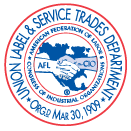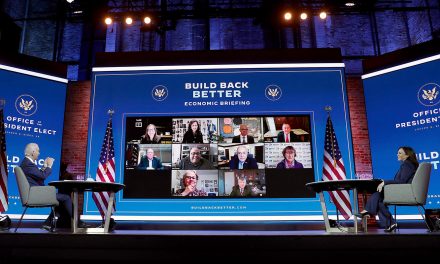The Infrastructure Investment and Jobs Act is expected to generate millions of jobs over the next few years, many in construction. A key part of the Bill includes provisions for promoting diversity, equity, and inclusion in workplaces. The legislation’s objectives are not just to rebuild the nation’s aging infrastructure but also to ensure that historically underserved and marginalized communities benefit from the infrastructure investments. It includes a provision that establishes a “Diversity in Infrastructure Fund” which will provide grants to support DEI initiatives in the infrastructure sector. Additionally, the bill’s provisions will increase access to job opportunities for disadvantaged individuals and communities, including through apprenticeship programs and workforce development initiatives.
Even before the bill’s provisions were announced, building trades unions in the United States were working on increasing the number of women and people of color in apprenticeships and in their member ranks.
## **The Need for DEI**
While the most recent U.S. Census estimates that women comprise over half of the U.S. population, they still make up fewer than 11 percent of the overall construction workforce. In fact, within craftsperson positions, where the greatest shortages exist, fewer than 4 percent are women (https://www.cpwr.com/research/data-center/data-dashboards/women-in-construction/). Nearly 60 percent of the current construction workforce identifies as white (non-Hispanic) and another 30 percent identify as Hispanic. Meanwhile, non-Hispanic Black individuals make up only 5 percent of the construction industry — significantly less than the 11.3 percent represented in the general workforce — and Asian people make up the remaining 1.8 percent, compared to the 6.2 percent operating under other employment (https://www.zippia.com/construction-worker-jobs/demographics/).
Studies have shown that workforce diversity is not just a moral necessity—it’s also a competitive advantage. A diverse workforce brings together a myriad of perspectives, experiences, and skills, fostering innovation and better decision-making. Despite this, women and people of color have long been underrepresented in apprenticeships and in the ranks of construction workplaces. Unions are now redoubling their efforts to combat this imbalance, recognizing that a more inclusive workforce makes for a stronger, more productive industry.
But the importance of diversifying the construction workforce is not limited to edicts demanding that women and minorities be better represented in the industry, the industry is facing a crisis – a dramatic skills shortage, an aging workforce, and a lack of new entrants. People are retiring from the construction industry much faster than new people are being hired. Statistics show that for every four people leaving the industry, only one enters.
Some research suggests that the industry needs to add nearly two million new craft professionals to the workforce by 2025 to meet demand. Encouraging women and minorities to pursue careers in construction can help bridge this gap and provide a fresh supply of skilled workers. It also helps to address the sector’s labor shortage and ensures its sustainability.
## **Unions’ DEI Strategies**
Unions are using a variety of strategies to increase the number of women and people of color in apprenticeships. One of the key tactics has been to develop partnerships with educational institutions and community organizations.
Some local unions are seeking to add childcare facilities to help their apprentices and journeypersons find more success with their careers. Some unions are making certain that feminine hygiene products are available at worksites and that worksite bathroom accommodations are more gender friendly.
A broad initiative by nearly every building trades union covers workplace safety. The construction industry requires well-fitted and well-maintained personal protective equipment (PPE) to keep employees safe as they carry out their daily duties. Most PPE is designed for males. For example, a respirator intended for a man likely won’t seal or provide proper protection for a woman. Something as simple as a hard hat — designed to protect the head from falling debris or tools — only functions if it fits properly and doesn’t fall off. A hard hat designed for a man may not fit appropriately on anyone else, leaving them vulnerable to injury. The Center for Construction Research and Training (CPWR), the research arm of the National Association of Building Trades Unions (NABTU), has compiled a list of women-friendly PPE on their website (https://bit.ly/3LqaW7D).
NABTU’s TradesFutures is its initiative that is trying to grow and diversify its ranks. They are conducting and sponsoring research and studies that delves into the reasons individuals fail to obtain or complete an apprenticeship and educate the public about the various career opportunities for craft workers in the construction industry.
NABTU’s TRADESWOMEN BUILD NATIONS (TWBN) organization holds a large conference that is now the largest gathering of tradeswomen globally. TWBN is also the largest gathering of Building Trades members on a yearly basis. At this annual event, apprentices, journey-level workers and retirees come together to train, mentor and celebrate women in every trade.
In addition, NABTU has worked with LeanIn.org and the AFL-CIO to launch a structured peer mentorship program that provides tradeswomen with a space to connect, speak openly about challenges, build skills to navigate bias and achieve goals on the job. In 2020, NABTU launched the Tradeswomen Heroes program, a monthly effort between NABTU’s Tradeswomen’s and Apprenticeship and Training Committees to highlight the tremendous women workers within our affiliate unions.
Many unions are also investing in diversity training, helping apprenticeship coordinators and instructors understand the importance of inclusion and how to foster it. This training often includes practical strategies for overcoming unconscious bias and creating a welcoming environment for all apprentices.
Unions are also creating mentorship programs, pairing new apprentices with experienced workers who can provide guidance and support. By ensuring that some of these mentors are women and people of color, unions are providing role models for new apprentices and showing that everyone can succeed in their chosen field.
## **The Impact of Unions’ Efforts**
The concerted efforts of unions are having a tangible impact. More and more women and people of color are entering and completing apprenticeships, bringing a wealth of talent and fresh perspectives to their industries. These apprentices, in turn, are breaking down barriers and inspiring others to follow in their footsteps.
However, there is still work to be done. Despite the progress made, women and people of color remain underrepresented in many apprenticeship programs. Unions are therefore continuing to refine their strategies, seeking new ways to promote diversity and inclusion.
Unions are proving that diversity, equity, and inclusion are more than just buzzwords—they are crucial components of a thriving, competitive industry. By increasing the number of women and people of color in apprenticeships, unions are fostering a more inclusive workforce, empowering individuals, and strengthening industries. Their efforts serve as a powerful example for other sectors and a beacon of progress in the ongoing journey towards true equality. ν







